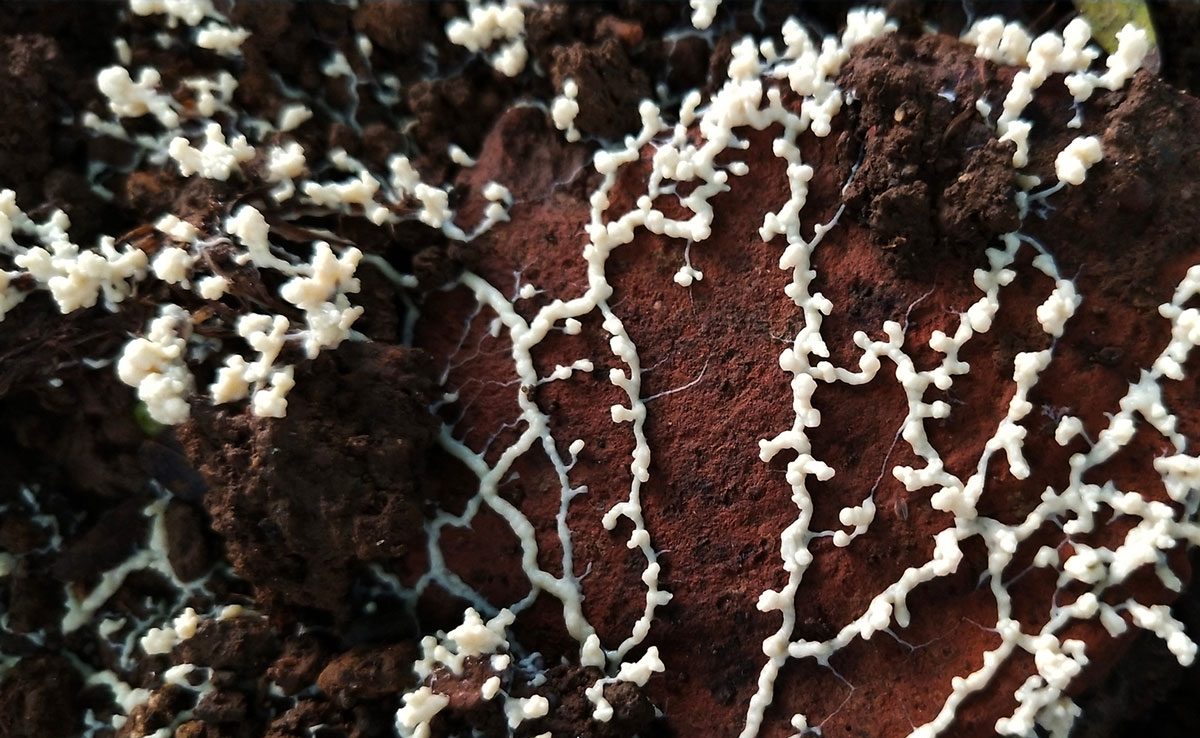
Now that you’ve prepared your soil to encourage microbial activity (see our previous blog), it’s time for your next mission: to introduce a suite of starter microbes that will help encourage plants to grow and self-sustain.
What we’re aiming to do here is to replace and kick start the microbes that were depleted, lost or destroyed during digging and construction. Traditionally, a few agronomists in this situation would add endo and ecto mycorrhizae (a type of fungi that grows in tandem with the roots of a plant in a symbiotic relationship) to the soil and that is it. Mycorrhizae of course are one major key to improving soil health; the question is how you get them to successfully proliferate in these highly disturbed, unbalanced soils.
The answer is that highly disturbed soils really benefit most from a diverse range of beneficial microbes (not just one type), including nitrogen fixers and cellulose digesters (to name a few), as well as fungi like the mycorrhizae. EnviroStraw’s soil scientists and microbiologists have discovered the benefits of a community of beneficial bacteria, fungi and other microbes that exist in symbiosis with the root hairs and the rhizosphere of plants.
Our BioGrowth™ revegetation system helps initiate the development of healthy soil using our EnviroMatrix Biotic Growth Amendment – a delicate blend of essential fungi, bacteria and natural minerals that help mimic the natural soil food web. This suite of microbes helps create a healthy ‘rhizosphere’ around the plant root – and in turn helps condition the soil (eg by increasing microbial biomass carbon, nutrient availability and water holding capacity etc) and kick start the soil-root microbiome – which then includes native species of beneficial microbes from the local area.
EnviroStraw’s signature BioGrowth™ program uses a specific multi-strain suite of 22 different beneficial microbes that have been carefully selected for reinoculation of these highly disturbed and out of balance soils on mining and construction sites.
Some of the various strains included are:
| Azotobacter |
Free-living nitrogen fixers to convert atmospheric nitrogen in the soil. |
| Azospirillum |
Produce plant growth hormones and biologically active substances. |
| Bacilli |
Produce beneficial metabolites that are useful in plant resilience, including lactic acid bacteria to help with soil conditioning and structure. |
| Cellulolytic Fungi |
Useful in the biodegradation, decomposition and recycling of cellulosic waste (eg stubble, dead roots etc) into stable organic carbon. |
| Mycorrhiza (VAM) | Important biological components of soil life and soil chemistry. These help uptake insoluble nutrients and actively source phosphorus and other key minerals and harvest water. |
| Phosphorus Solubilizing Bacteria |
Converts insoluble phosphorus (eg Rock P) into plant-available “P”. |
| Pseudomonas | Able to degrade a broad spectrum of compounds, acting as bio remediators. |
| Streptomyces | Includes Actinobacteria. Helps improve soil health. |
| Saccharomyces | Important yeasts that convert carbon dioxide into organic carbon and sugars within the soil. |
| Trichoderma | Beneficial fungi that help to minimise wilting and dampening of seedlings. Now being successfully utilised on a commercial scale for potential improvement in soil health. |
Once this suite of microbes is added and activated, beneficial microbes can start to flourish and recolonise disturbed soils – leading to resilient and long-lasting, self-sustaining revegetation.